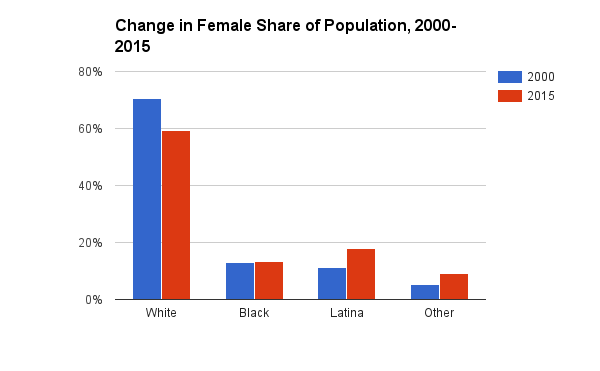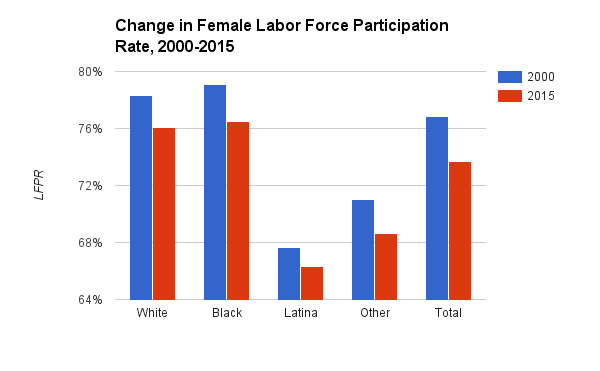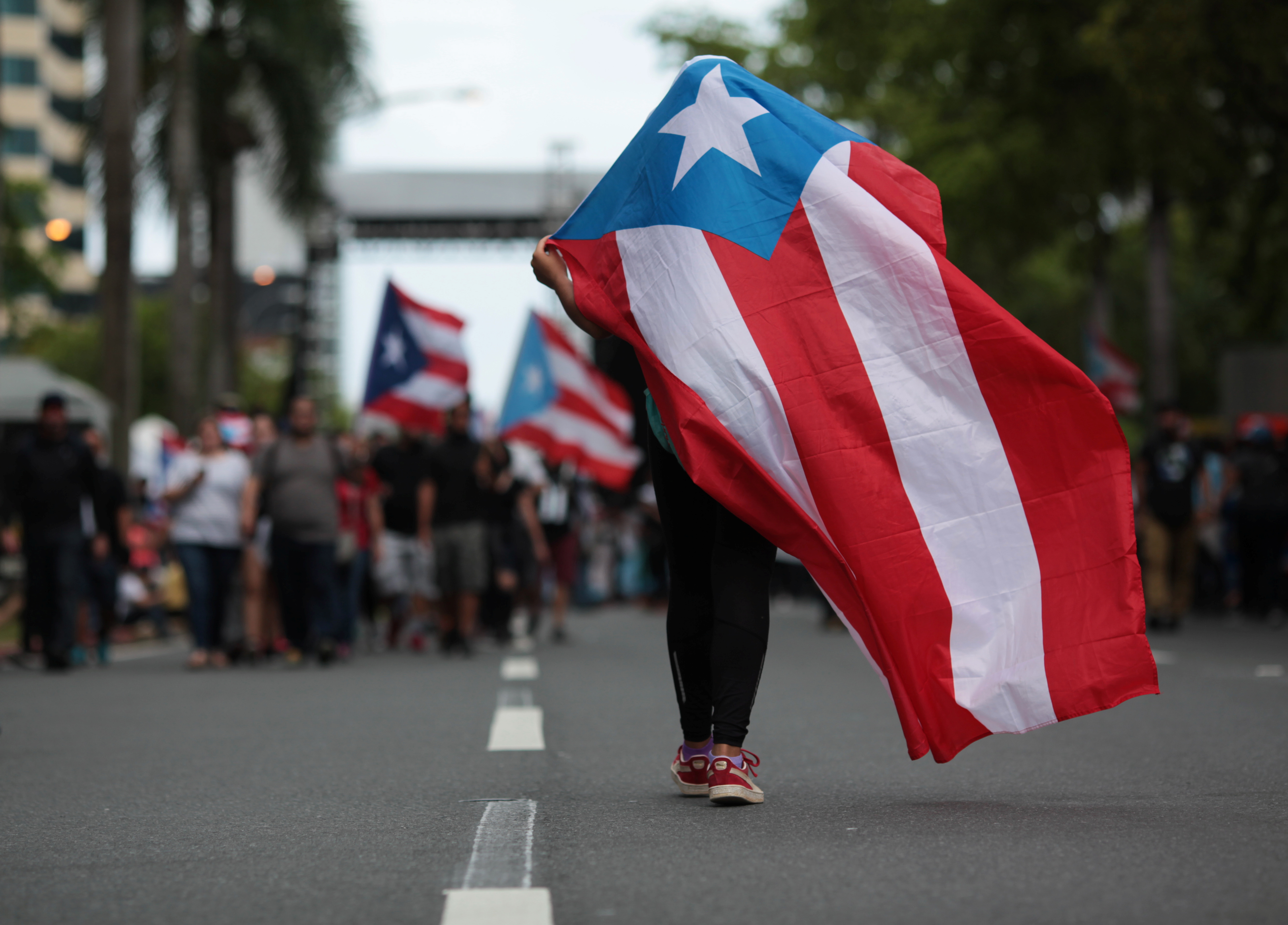What will the browning of America do to the female workforce?
More stay-at-home moms means fewer working women


Over the coming decades, America will get browner.
By the end of the decade, the U.S. Census projects that a majority of children under 18 will be non-white; by 2043, non-whites will be a majority of the American population.
Much of that growth will come from Latinos. Currently America's largest minority at about 17 percent of the population, they are expected to increase that share to perhaps 29 percent by 2050.
The Week
Escape your echo chamber. Get the facts behind the news, plus analysis from multiple perspectives.

Sign up for The Week's Free Newsletters
From our morning news briefing to a weekly Good News Newsletter, get the best of The Week delivered directly to your inbox.
From our morning news briefing to a weekly Good News Newsletter, get the best of The Week delivered directly to your inbox.
This will have huge social effects on everything from language to business. But one overlooked area is on the ratio of women in the workforce. That's because Latinos and other non-white, non-black groups tend to have a more traditional family structure, where the mother stays at home. In fact, this trend is already having a massive effect on the overall female labor force participation rate — i.e. the percentage of women who are either employed or looking for work. To find out by how much, let's walk through a few numbers.
First, take a look below at the female share of the population for whites, blacks, Latinas, and everyone else, in 2000 and 2015, courtesy of U.S. census microdata:

As you can see, the ratio of white women in the U.S. population dropped dramatically from 2000 to 2015, as the percentage of Latina and "other" — basically, Asian, Middle Eastern, South Asian, etc. — women rose. That's what everyone refers to as the "browning" of America.
Now take a look at the labor force participation rate among women aged 25-54 for each group:
A free daily email with the biggest news stories of the day – and the best features from TheWeek.com

Since 2000 the overall prime-age female labor force participation has declined by about 3.13 points, thanks largely to years of economic weakness. Every group fell over that time — but notice how much lower the rate for Latinas is compared to white and black women. When you couple that with the rise in the Latina population, you see a downward pull on the total rate of women in the workforce.
To find out the extent, let's take an imaginary scenario in which the 2000 population held steady until 2015. What would the decline of the female prime-age labor force participation rate have been in this parallel America over the past 15 years? About 2.18 points — i.e. about 0.95 higher than the real decline of 3.13. (It's just simple algebra: Multiply the 2015 labor force participation rate for each group by their population share from 2000, add them all together, and then subtract that total from the real 2000 rate.) That's about a 30 percent difference — meaning the growing share of non-black, non-white groups, particularly Latinos, accounts for about a third of the decline in female participation in the job market between 2000 and 2015. That's pretty massive.
Which begs the obvious question: Why?
The single biggest reason is family structure. As of 2012, 38 percent of Latina mothers with children younger than 18 did not work, as compared to 26 percent of blacks and 24 percent of whites. Much of that, in turn, can probably be chalked up to immigration. As of 2014, 49 percent of adult Latinos are foreign-born; some 40 percent of immigrant mothers stay at home as against 26 percent of U.S.-born mothers. Since most Latinos come from heavily Catholic countries with more traditional family norms, this isn't so surprising.
Now, it's hard to say with any confidence where these trends might lead in the future. Family behavior has been undergoing a sea change over the last few decades: People are marrying later or not at all; and delaying childbearing or avoiding kids altogether. Meanwhile, the percentage of kids born to unmarried couples or single mothers has increased drastically.
What's more, children of immigrants tend to be more similar to the background average than their parents — and native births have supplanted immigration as the major source of Latino population increase. It could be that within a generation or three, the major racial groups will converge towards a broadly similar pattern of behavior, through a process of assimilation.
But on the other hand, given a probable future collapse in the U.S. birthrate, America may be forced to implement much more generous family policy in the near future. Some policy, like paid family leave, would make it easier for women to stay in the workforce, while others, like a child allowance, would make it easier for them to leave it. Which one we emphasize will depend on how future policymakers view female labor and family structure. Only time will tell.
Editor's note: This article originally slightly miscast the details of the decline in labor force participation. It has since been corrected. We regret the error.
Ryan Cooper is a national correspondent at TheWeek.com. His work has appeared in the Washington Monthly, The New Republic, and the Washington Post.
-
 Political cartoons for December 6
Political cartoons for December 6Cartoons Saturday’s political cartoons include a pardon for Hernandez, word of the year, and more
-
 Pakistan: Trump’s ‘favourite field marshal’ takes charge
Pakistan: Trump’s ‘favourite field marshal’ takes chargeIn the Spotlight Asim Munir’s control over all three branches of Pakistan’s military gives him ‘sweeping powers’ – and almost unlimited freedom to use them
-
 Codeword: December 6, 2025
Codeword: December 6, 2025The daily codeword puzzle from The Week
-
 Why Puerto Rico is starving
Why Puerto Rico is starvingThe Explainer Thanks to poor policy design, congressional dithering, and a hostile White House, hundreds of thousands of the most vulnerable Puerto Ricans are about to go hungry
-
 Why on Earth does the Olympics still refer to hundreds of athletes as 'ladies'?
Why on Earth does the Olympics still refer to hundreds of athletes as 'ladies'?The Explainer Stop it. Just stop.
-
 How to ride out the apocalypse in a big city
How to ride out the apocalypse in a big cityThe Explainer So you live in a city and don't want to die a fiery death ...
-
 Puerto Rico, lost in limbo
Puerto Rico, lost in limboThe Explainer Puerto Ricans are Americans, but have a vague legal status that will impair the island's recovery
-
 American barbarism
American barbarismThe Explainer What the Las Vegas massacre reveals about the veneer of our civilization
-
 Welfare's customer service problem
Welfare's customer service problemThe Explainer Its intentionally mean bureaucracy is crushing poor Americans
-
 Nothing about 'blood and soil' is American
Nothing about 'blood and soil' is AmericanThe Explainer Here's what the vile neo-Nazi slogan really means
-
 Don't let cell phones ruin America's national parks
Don't let cell phones ruin America's national parksThe Explainer As John Muir wrote, "Only by going alone in silence ... can one truly get into the heart of the wilderness"
